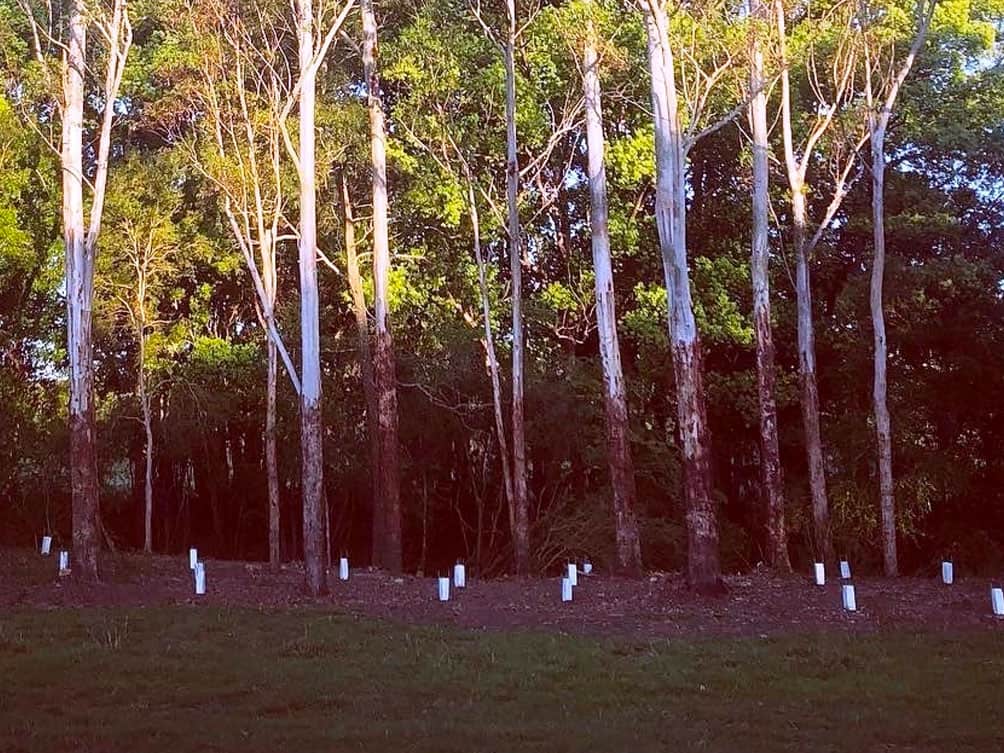
As a part of Hastings Landcare’s Post fire Koala Habitat Recovery grant funded by WIRES & Landcare Australia 24 landholders were supported to plant 5000 trees. This project aims to create additional habitat and food resources to support the koala population following the fire and into the future. Landholders were able to use funding to purchase materials such as tree guards or hire a contractor to plant. Trees were donated by the Port Macquarie Koala Hospital.

Among the landholders were Taliska and Dale Arentsen who, along with their family, planted 200 trees on their property at Lorne. To protect trees from feral deer electric fencing was installed and the trees were deep stem planted. Taliska says, “the project was a great way to continue the work we are undertaking to rehabilitate our property including the riparian zones of Camden Haven River which borders our 40 acres. It was also special to plant them when we did as I was 38 weeks pregnant with our daughter. We will watch these trees grow with her. The whole family pitched in and it was a really rewarding group effort. Our 2-year-old son was also actively involved and can’t wait for the Koala’s to move in!” The trees have thrived with recent rain, despite some of them going under in flood water.
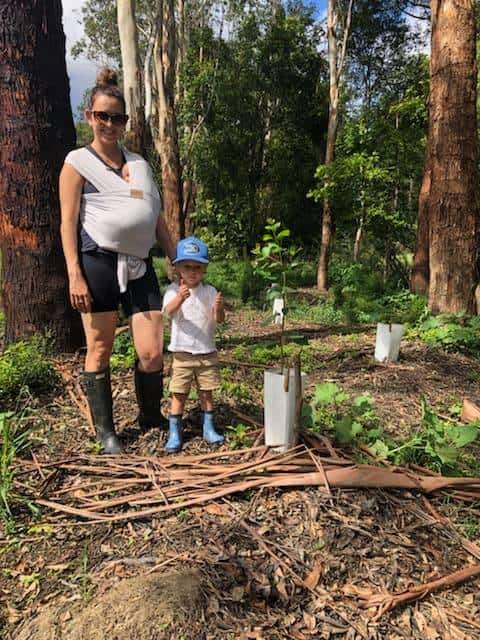
What are patch corridors? Unlike a traditional linear wildlife corridors created along fence lines, patch corridors are more like stepping stones across the landscape. In wildlife terms both forms of corridors are aimed at creating safe passage to substantial core habitat being large areas of bushland (could be privately owned, national park, state forest, etc). A large enough patch can provide significant habitat, especially when create around a water source such as a dam or wetland. In farming terms, patches and corridors also provide a multitude of benefits for stock.
Landholders in the Toms Creek area created three patches across the landscape, filling the gap between existing patches. Fencing was installed to exclude stock, the site prepared and planted and trees watered during dry periods. The site will be observed and maintained accordingly (Eg. Weed control). 300 trees were planted in the patch zones, kikuyu was not present so grasses were left to give the trees protection from wind and pests while newly planted. With all the rain the trees are healthy and strong. One zone incorporated a dam, creating a biodiversity hotspot. Insects, frogs, birds, snakes, lizards and mammals will move in here! The landholders are also allowing the natural regeneration of native gums and shrubs around existing trees to widen these patches and ensure succession of paddock trees.There have been sightings of koalas moving across open pasture to reach different areas of core habitat. These new patches will fill the gaps and allow safer passage.
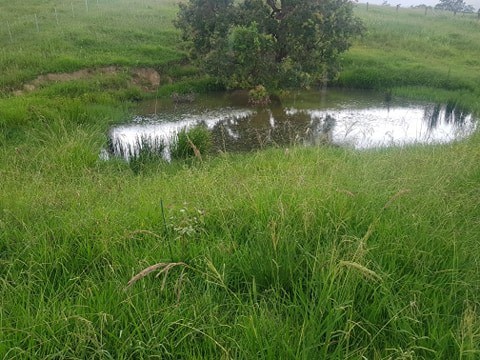
Four hundred koala food trees have been planted in Pembrooke by a group of keen volunteers in an effort to create a wildlife corridor for koalas. The project will create a dense corridor between two state forest parcels to allow koalas and other wildlife to easy access across the landscape.It has been a team effort to get these trees in with the local community helping out at a planting day , Tafe students volunteering to help and the landholders doing all the fencing, site preparation and follow up maintenance.
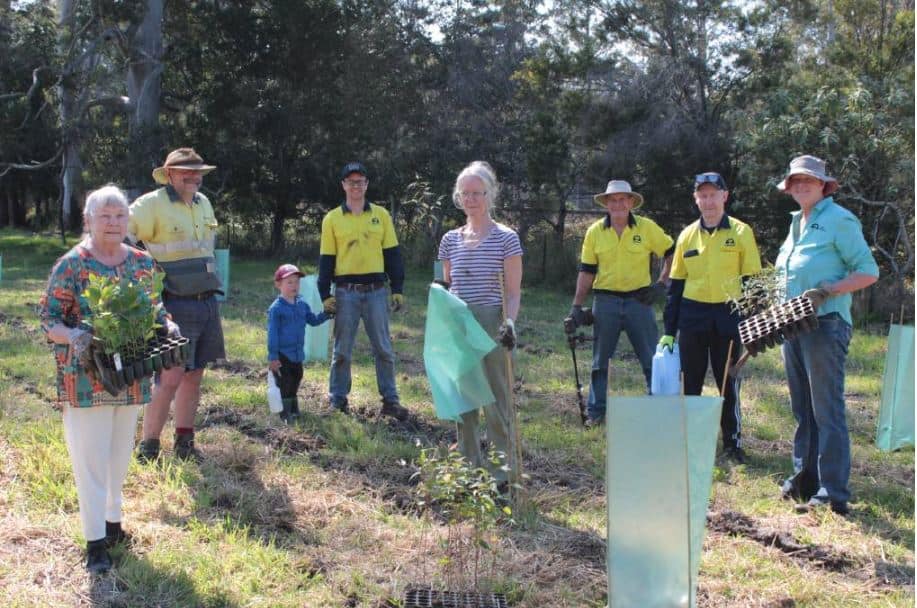
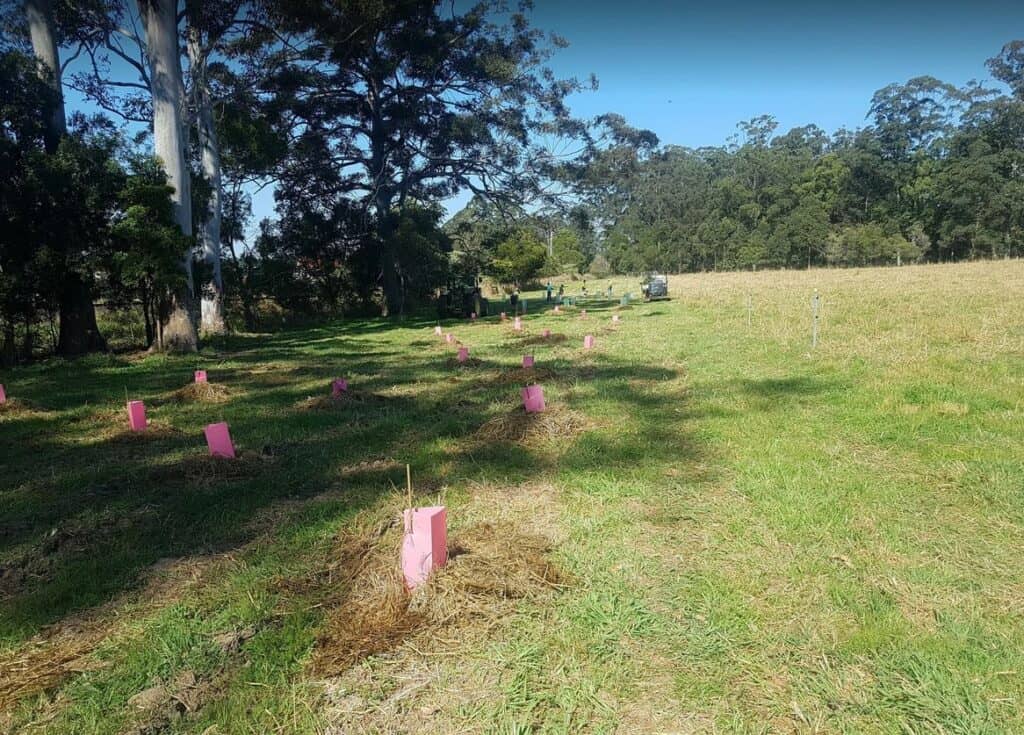
Landholders at Lorne pitch in to enhance and extend koala habitat. This project involved extensive understory weed control and revegetation of 100 koala food trees donated by the Port Macquarie Koala Hospital. With previous koala sightings in the the area it would be wonderful see koalas visiting these trees for food and shelter once the trees have establish in years to come!

Hastings Landcare supports local people caring for the environment, farmland and natural resources of our local region. Hastings Landcare President Peter Fitzroy say, ‘this project provides benefits for our koala populations both now and in the future, and supports sustainable land management practices’. If you would like to support or join Hastings Landcare please contact 02 6586 4465 or office@hastingslandcare.org.au. Alternatively, visit Hastings Landcare’s website where you can join or subscribe to our newsletter.